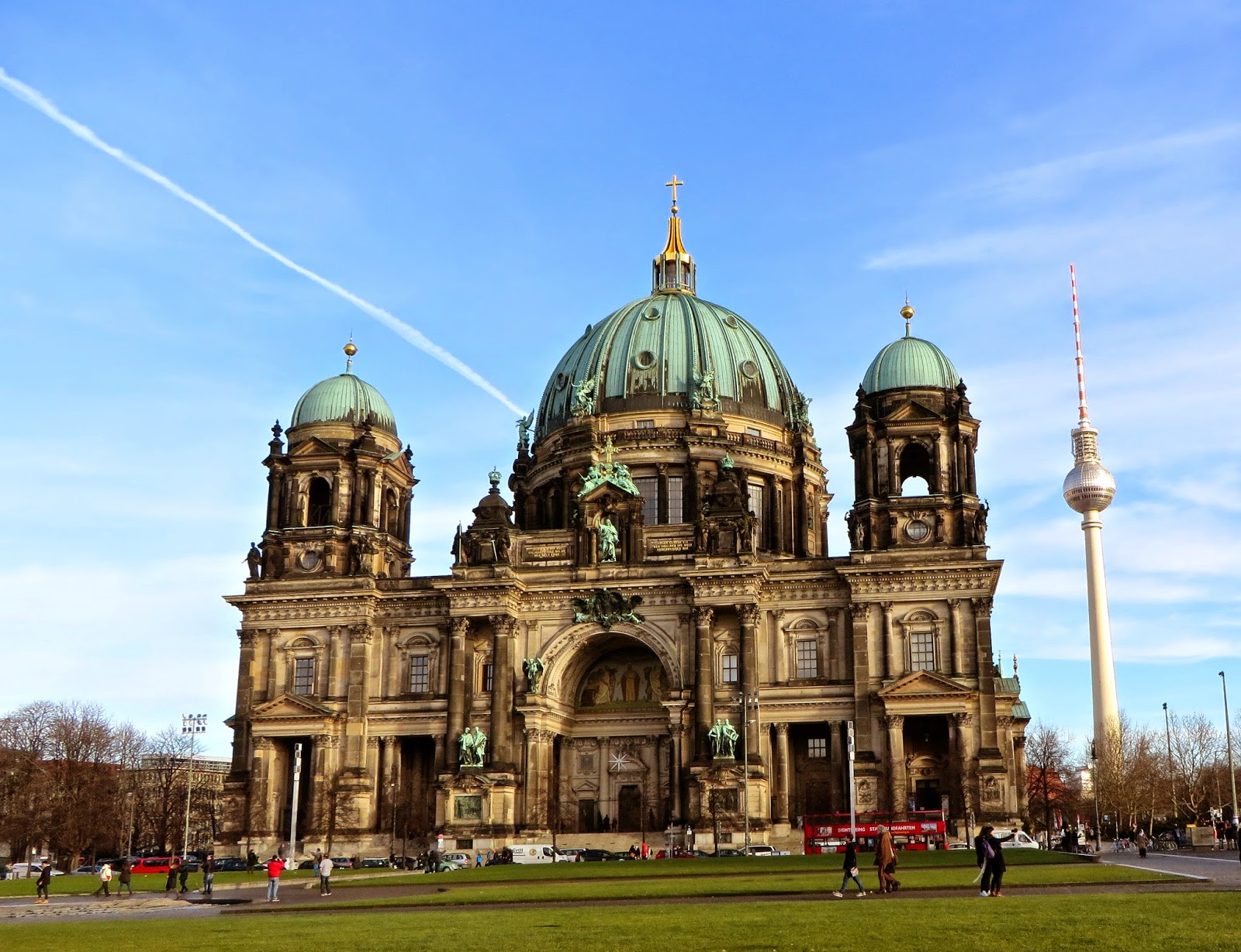If you haven’t been to Berlin, or Europe generally, this
East German city is a must. An explosion of war history and cultural splendor,
Berlin seems ever in the crosshairs of ideology and struggle. In only the last
century, it has felt the tides of Nazism, Communism, economic ruin, liberty,
modernity, and multiculturalism. Our meager three days were quite a crash course
in each category.
We rode in by bus from Dresden and settled into our
apartment on the East side of the old wall. Our introduction to the
neighborhood was through its culinary diversity, with our dining lineup in the
first 48 hours as follows: Indian, Vietnamese, Thai, and Mexican (after a
“Bahamas” bar with sandy floors and palm trees). Additionally, we picked one of
the many vegan places, had some more Indian, and Devin got Curry Wurst from a
famous stand under the bridge. After his very interesting haircut experience in
the predominantly Arabian neighborhood (his nose and ears were on fire at one point), we spent several hours wandering
the “hipster” West side with its typically trendy coffee shops and novelty
establishments.
Of course, a walking tour was just what we needed to make
sense of the many cultural and historical layers. Our guide was especially
energetic and insightful – enough to keep 30 people riveted in 45F weather for
nearly three hours. We started at the Brandenburg gate and got caught up on
German history before the 19
th century. Passing the modern Capitol
buildings, we heard about WWI and the financial struggles that followed. Nazi
architecture was next, and we stood in the now parking lot directly above
Hitler’s suicide bunker, next to the park where the body was discarded and
unsuccessfully burned by his fleeing guards.
From there we zigzagged for a bit
along a brick path, running the whole length of downtown, representing the
location of the Berlin Wall - only part of which remains today. Ubiquitous Communist
architecture and public propaganda provide a sort of blast-from-the-past, given East Berlin’s continuing economic struggles and inabilities to rebuild and
modernize, unlike its Western half. Even today, one may pass entire families on
the street who have only been reunited as of 30 years ago, some discovering that spouses and even children had been spying on them for decades or were even responsible for the disappearing of particular loved ones with unapproved political
thoughts. From Nazi vets to Communist spies, from German and Russian
identities to a swirling mix of immigration and international student life, Berlin is a dizzying mural of European endeavors.
 |
| The remaining part of the wall. |
 |
| The German Reichstag |
 |
| The Berlin Duomo |
 |
| Another beautiful church, amazingly unscathed throughout wartime. |
We appreciated the many monuments and museums, often free of
charge, that help piece together Berlin’s history and accent its very real and
deeply human aspects. Most striking was the Jewish holocaust memorial, an
entire city block dedicated to a powerful artistic expression of the magnitude of
suffering and death, with an underground museum containing a seemingly endless
amount of pictures, writings and artifacts from those affected by the concentration camps. One great lesson to be learned is that racism against Jews is unique in human history: it has always been marked by an exterminationist intent. Marked not merely by a dislike or an avoidance of the hated, or a desire to see them set back or exploited, but a pathological obsession with their complete annihilation. Further, Jew hatred never stops with just the Jews; how many non-Jews suffered and died because of Hitler's war on the Jews?
Also striking was the “dead zone” between East and West Berlin, a sandy
area seeded with mines and sharp objects, between the two parts of the wall
that had top edges designed to be insurmountable, and patrolled 24/7 by
dogs and snipers on a kill order. We heard several incredible stories of brave
individuals who found ingenious ways to get across, including zip lines, pole
vaults and even catapults. It is quite telling when a country has to build a
wall… to keep people IN.
 |
| A section of the East Side Gallery (a mural painted on a portion of the remaining part of the wall). |
Overall, we left Berlin with twice as many questions as
observations, with very satisfied stomachs, and with an unfolding desire to
visit again soon – or more than just visit??






No comments:
Post a Comment